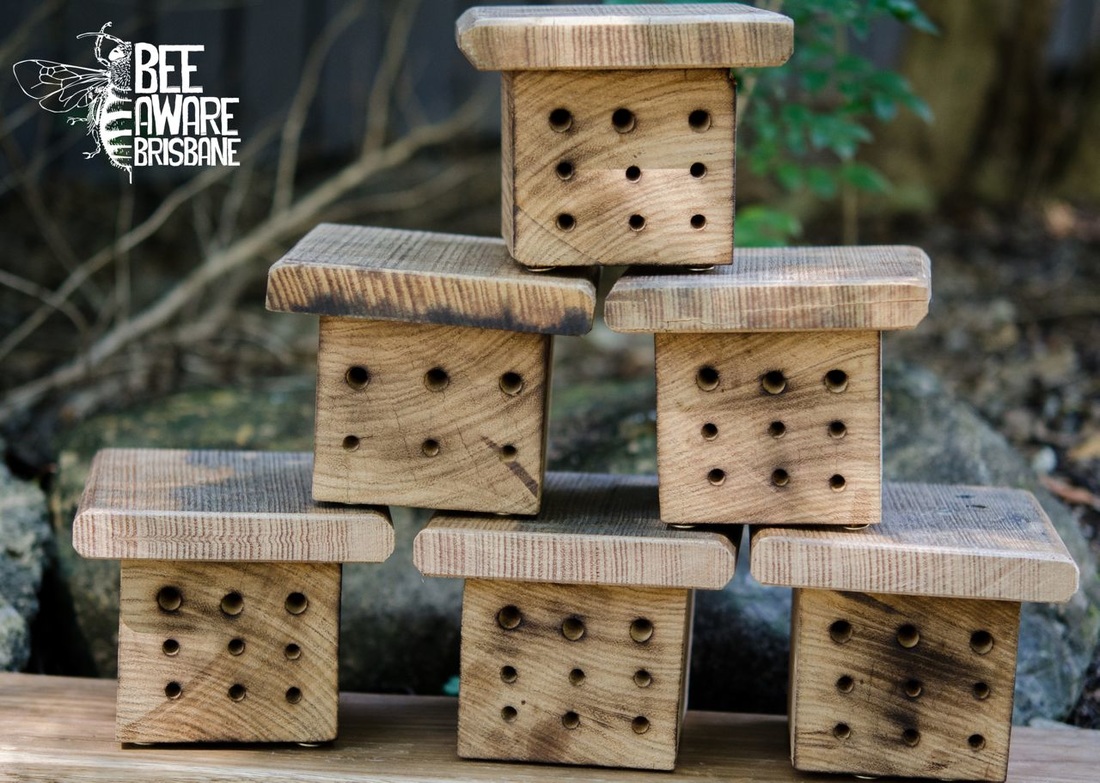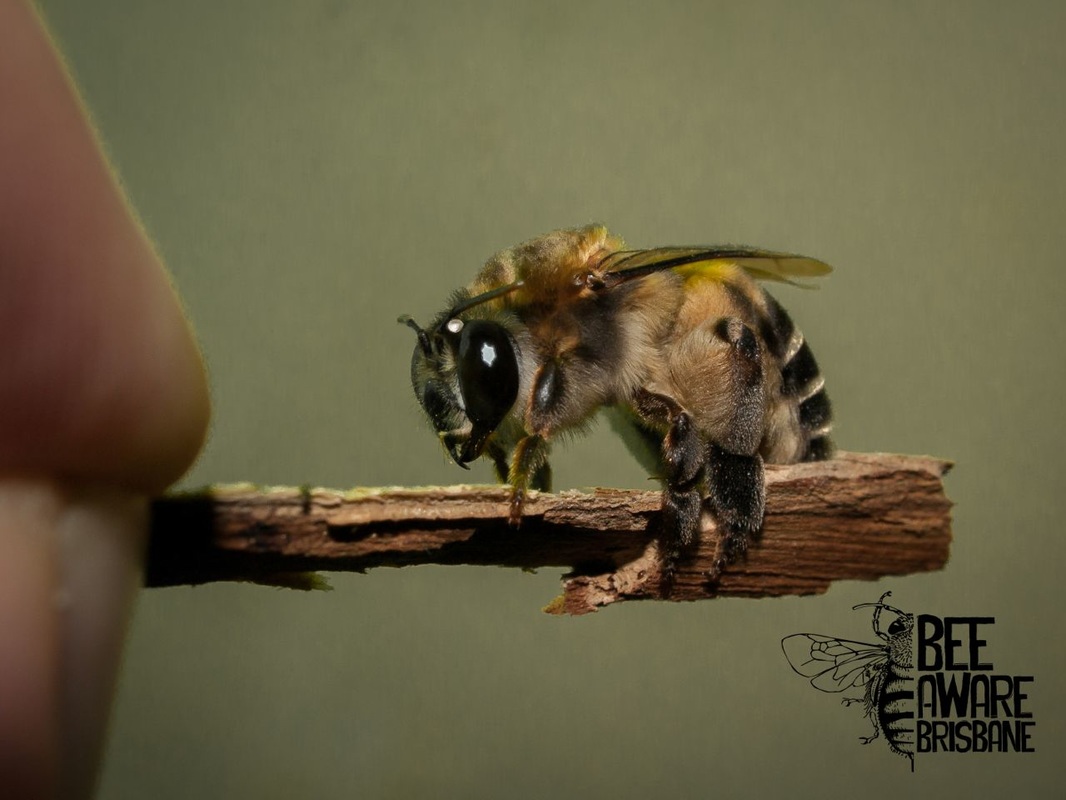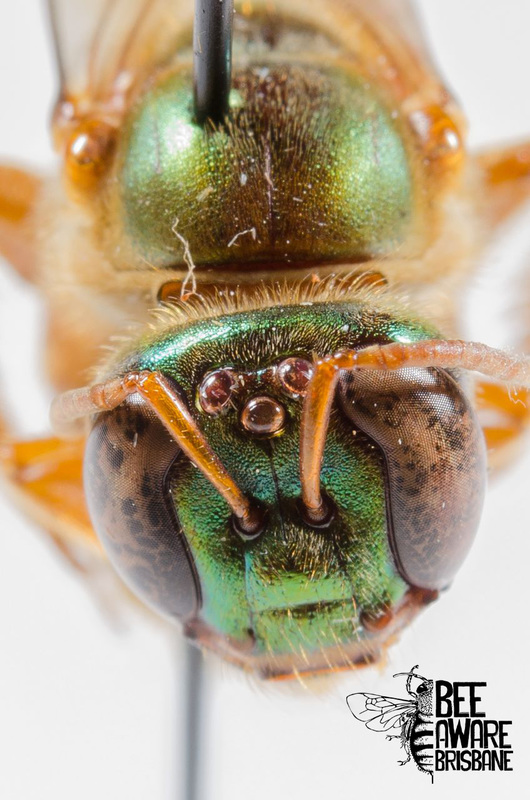In preparation for spring, you can make nest sites for native cavity nesting solitary bees for your garden. Get a block of timber (that has not been treated with any chemicals!) and drill some holes in it. Holes of 6mm and 8mm diameter seem to be good, and will attract resin bees and leafcutter bees. But why not experiment too? Drill some other random sizes and see what you get? Drill as deep as you can, up to a depth of about 13–15cm for the larger diametres. The holes should be angled slightly up, so the bee goes up a very slight incline as it crawls in. After drilling the holes, it can also help to flame the hole entrances slightly. One way of doing this is to briefly pass the timber over a burning gas cooking ring. I suggest just having a series of small nest blocks scattered around, rather than a big block or a ‘bee wall’, as large aggregations can increase the incidence of pests and disease. Put your nest block outside in a place where it is protected from rain and harsh summer sun. Now wait patiently, and when it starts to warm up, females of various solitary bee species might move in. If you miss seeing the bees coming and going, you will know when someone has nested in a hole because the end will be sealed up. Remember that solitary bees can sting, but usually only if handled. In nature these bee species often nest in the holes left by wood boring beetles.
|
Heard of the night parrot? I bet you have. What about night bees?? Yes, there are nocturnal and crepuscular (fly at dawn and dusk) bees!! And yes, they collect pollen and nectar and do the things that day-flying (diurnal) bees do. But in the dark! All bees have three little spherical structures on their heads called ocelli, which are like little extra eyes that help them see and orientate. Compared with day bees though, night bees have much larger ocelli, relative to their head size, which is one of the traits that enable them to fly in low light. In the photos below are one nocturnal bee (Megalopta centralis) and one crepuscular bee (Rhinetula dentrictus) from Panama. These I encountered while light trapping in rainforests there. They were attracted to light just like moths. Here in Australia we have one bee species, Reepenia bituberculata (QLD), which is believed to be a night flyer? It has enlarged ocelli, but no one has actually observed it flying at night. Elusive? The elusive night bee of Queensland…?!!
|
Archives
December 2017
Blog postsThese are a collection of posts that have appeared on the Bee Aware Brisbane Facebook page over the last couple of years. Categories |





 RSS Feed
RSS Feed
